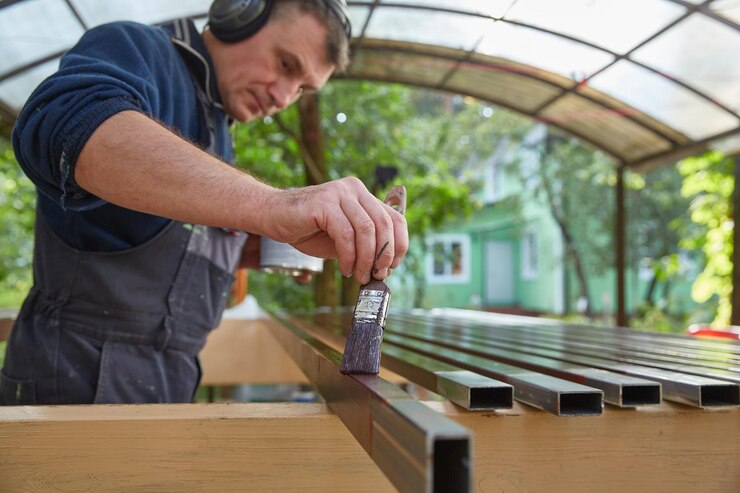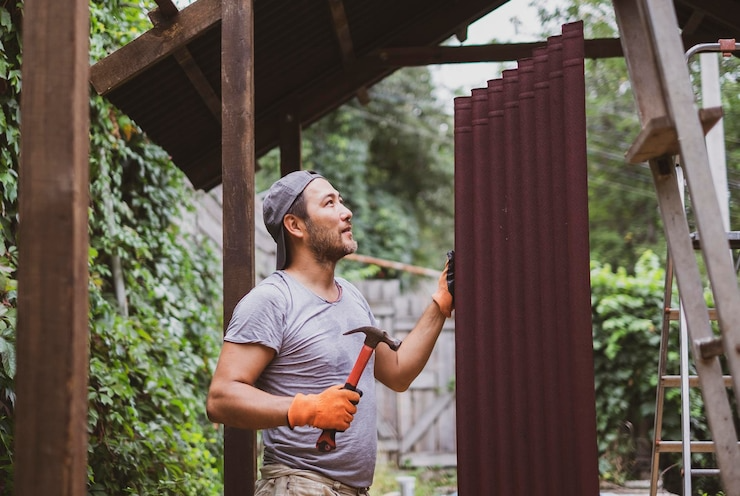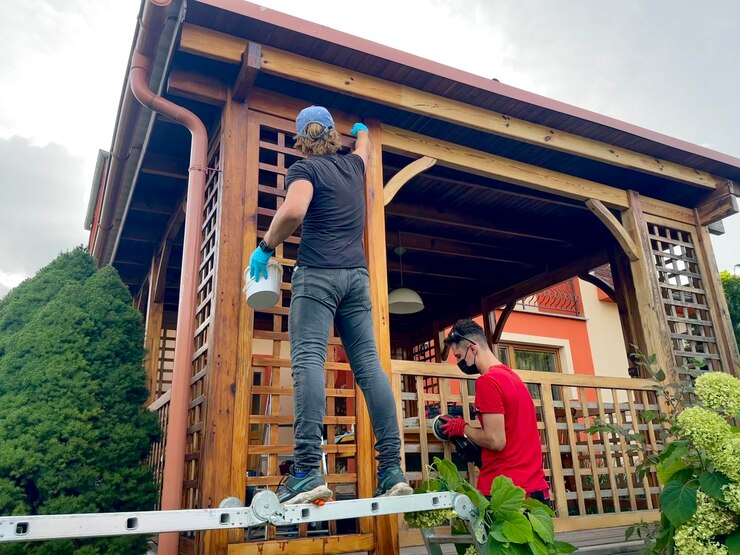Gazebos offer a stunning centerpiece for any outdoor space, adding both beauty and functionality to your yard. Whether you’re creating a shaded area for gatherings or simply enhancing your garden’s aesthetics, understanding how to install a gazebo properly is key to long-lasting enjoyment.
Further content will delve into benefits, types of gazebos, choosing materials, installation steps, and much more.
Choosing the Right Gazebo for Your Space
Selecting the perfect gazebo begins with understanding the types available and your space’s specific needs. The market offers a variety of options, from traditional to modern styles, and each type has its own installation requirements and maintenance needs.
Types of Gazebos: Permanent vs. Portable
- Permanent Gazebos: Built for long-term use, these gazebos are anchored into the ground and often made of materials like wood or metal. They offer durability and stability but may require professional installation due to their weight and structural needs.
- Portable Gazebos: Ideal for temporary events or flexible use, portable gazebos are lightweight and easy to assemble. Made from materials like aluminum or steel with fabric roofs, they’re easy to dismantle and move, making them perfect for renters or seasonal use.
Popular Materials for Gazebos
- Wood: Offers a classic, natural look and can be stained or painted. It requires regular maintenance to prevent rot and weather damage.
- Metal: Common options include aluminum, steel, and wrought iron. Metals are durable and weather-resistant, but some may rust if not treated properly.
- Vinyl: Low-maintenance and weatherproof, vinyl gazebos are easy to clean and come in various colors and designs, though they may lack the traditional look of wood.
Factors to Consider When Selecting a Gazebo Size and Style
Before making a decision, consider the purpose and aesthetics of your gazebo. For instance, a large gazebo may be necessary for frequent gatherings, while a compact model might suit a small garden corner. Style should also complement your home’s design—whether rustic, modern or somewhere in between.
Preparing for Gazebo Installation

Site Selection and Preparation
Choose a level spot in your yard that is accessible and free from overhead obstacles like tree branches or power lines. Mark the dimensions and clear the area of debris, grass, or other obstructions. Some installations, especially permanent gazebos, may require a foundation or concrete pad to ensure stability.
Obtaining Necessary Permits and Understanding Zoning Laws
Many municipalities require permits for structures like gazebos, particularly if they’re permanent or large. Check local zoning laws to determine whether there are restrictions regarding size, height, or location. Obtain any required permits before installing to avoid fines or other complications.
Tools and Materials Needed for Gazebo Installation
Having the right tools on hand will simplify the installation process. Some essentials include:
- Power drill and bits
- Level
- Tape measure
- Ladder
- Mallet or hammer
- Wrenches and screwdrivers
Be sure to review the specific instructions for your gazebo model, as some may require specialized tools.
Step-by-Step Guide to Gazebo Installation
Unpacking and Organizing Gazebo Components
Lay out all components and check against the instructions to ensure nothing is missing. Group similar parts together, such as screws, brackets, and support poles. This will make each installation stage easier to manage and minimize the risk of lost pieces.
Building the Base and Ensuring Stability
Start by constructing a solid base, which may involve securing posts into the ground or attaching a frame. Ensuring the base is level is crucial for the stability of the entire structure, so double-check your measurements and use a level frequently.
Assembling the Gazebo Frame
Most gazebo frames are built in sections, with each wall or side joined to the next. Follow the manufacturer’s instructions, using bolts and screws to secure the parts tightly. Some frames may require additional bracing, particularly if the gazebo is designed to withstand windy conditions.
Installing the Roof and Finishing Touches
The roof installation is often the most challenging step due to the height and weight of the components. Use a ladder to reach the upper sections safely and enlist the help of another person if necessary. Once the roof is secured, add any finishing touches, such as decorative elements, lighting fixtures, or curtains.
Safety Tips for Gazebo Installation

- Proper Use of Tools: Ensure that you know how to operate each tool safely. Follow instructions and wear protective gear, including gloves and eye protection, when necessary.
- Handling Heavy Components Safely: Some gazebo parts can be heavy and awkward to manage. Avoid lifting too much alone—always ask for assistance or use mechanical aids when possible.
Common Challenges in Gazebo Installation and How to Overcome Them
Uneven Ground or Site Sloping
If your chosen location has a slight slope, you may need to level it by adding sand, gravel, or concrete footings. Alternatively, depending on the gazebo model, adjustable feet or stakes may be an option.
Aligning and Securing Parts Correctly
It’s essential to double-check alignments as you assemble each section. If holes don’t line up, avoid forcing parts together; instead, re-examine the positioning or check for misaligned screws or bolts.
Managing Installation in Different Weather Conditions
Avoid installing the gazebo in adverse weather conditions like high winds or rain. If you must proceed, secure loose parts and ensure the area is safe to work in.
Enhancing Your Gazebo with Accessories
Popular Gazebo Accessories
Adding accessories can improve both the functionality and aesthetics of your gazebo:
- Lighting: String lights, lanterns, or LED fixtures can create a cozy evening ambiance.
- Curtains and Nets: Curtains provide privacy, while nets keep bugs out, making the gazebo more comfortable.
- Furniture: Outdoor seating, tables, and cushions can turn your gazebo into an inviting gathering space.
Weatherproofing and Maintenance for Longevity
Weatherproofing treatments can extend the life of your gazebo, especially if it’s made of wood. Check for signs of wear regularly and treat exposed surfaces with sealants or paint as needed.
Maintaining Your Gazebo After Installation
Seasonal Maintenance Tips
- Spring and Summer: Inspect for any damage that occurred over the winter, like rust or rotting, and clean surfaces thoroughly.
- Fall and Winter: Remove any accumulated leaves or debris, and consider covering the gazebo with a tarp to protect it from snow and rain.
Cleaning and Upkeep Based on Material
Different materials require different care routines. Wooden gazebos benefit from periodic staining or painting, while metal gazebos may need rust-prevention treatments. Vinyl gazebos, though low-maintenance, should be cleaned regularly to maintain their appearance.
Cost Considerations in Gazebo Installation
Budgeting for DIY vs. Professional Installation
The cost of installing a gazebo can vary widely depending on whether you choose DIY or hire a professional. While DIY installation may be cost-effective, hiring a professional could save time and ensure a safe, high-quality setup.
Cost of Gazebo Materials and Accessories
Prices for gazebos range based on materials, size, and additional features. Wooden and metal gazebos tend to be pricier, while vinyl options are often more affordable. Factor in the cost of any accessories, like lighting or furniture, to ensure your budget covers all aspects.
Professional Installation vs. DIY Gazebo Installation

Pros and Cons of DIY Installation
DIY installation offers a sense of accomplishment and can save on labor costs, but it may be physically demanding and time-intensive, especially for larger structures. Be honest about your skill level and stamina before committing to a DIY project.
When to Consider Hiring a Professional Installer
If your gazebo installation requires extensive foundation work or complex assembly or is short on time, hiring a professional installer might be the best choice. Professionals can ensure stability, safety, and a faster installation process.
Environmental Impact of Gazebo Installation
Eco-Friendly Materials and Sustainable Practices
Consider choosing materials that are sustainably sourced, such as certified wood, or opting for recycled metal or vinyl. Using eco-friendly treatments and paints also reduces your gazebo’s environmental impact.
Gazebo Installation Ideas and Inspiration
Design Inspirations for Different Yard Styles
From rustic wooden gazebos to sleek, modern metal structures, a gazebo style suits every backyard. Look for inspiration based on your landscape, whether it’s a garden, patio, or poolside.
Popular Color Schemes and Decor for Gazebos
Neutral colors like beige and grey offer versatility, while brighter hues can make your gazebo a focal point. Decor options include potted plants, outdoor rugs, and colorful cushions that add comfort and personality.
Frequently Asked Questions
- How Long Does Gazebo Installation Take?
The timeline varies by size and type, but most DIY installations take a weekend, while professionals can complete it in a day. - What are the Best Gazebo Materials for Durability?
Metal and treated wood are durable, with vinyl offering a low-maintenance, long-lasting option. - How Can I Weatherproof My Gazebo?
Weatherproofing treatments like sealants and rust-proof coatings can protect your gazebo from rain, wind, and sun damage. - Do I Need a Permit for Gazebo Installation?
Permits are often required for permanent structures. Check with local authorities for specific guidelines. - Can a Gazebo Be Installed on Uneven Ground?
Yes, but leveling may be required. Alternatively, use adjustable feet or custom footings for stability. - What is the Cost Range for Gazebo Installation?
Basic installations for small, portable gazebos may start at $500, while custom builds can exceed $5,000.
Conclusion
Installing a gazebo can transform your outdoor space, providing a serene spot to unwind and entertain. By following proper installation steps and maintaining your gazebo, you’ll enjoy a long-lasting addition that enhances your yard’s appeal and functionality.

